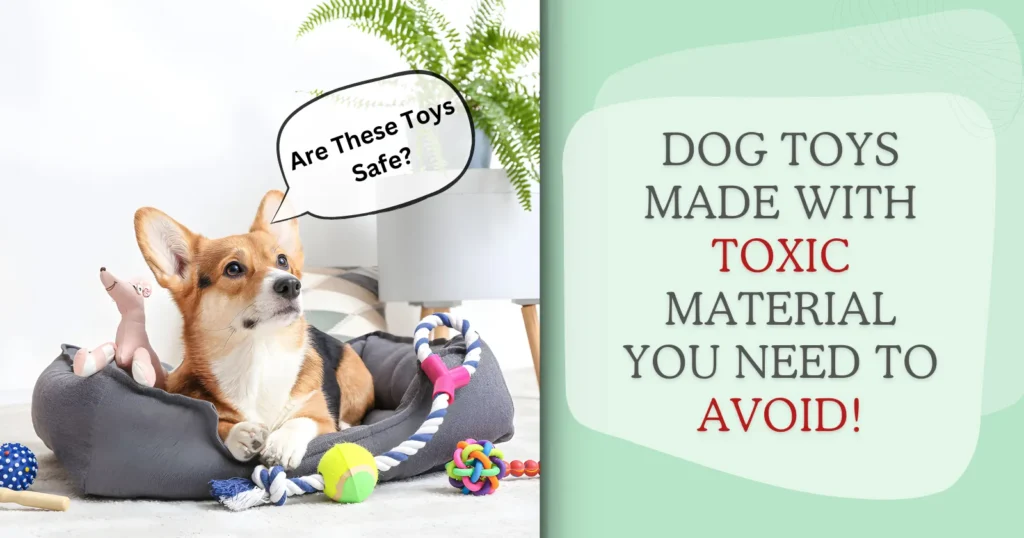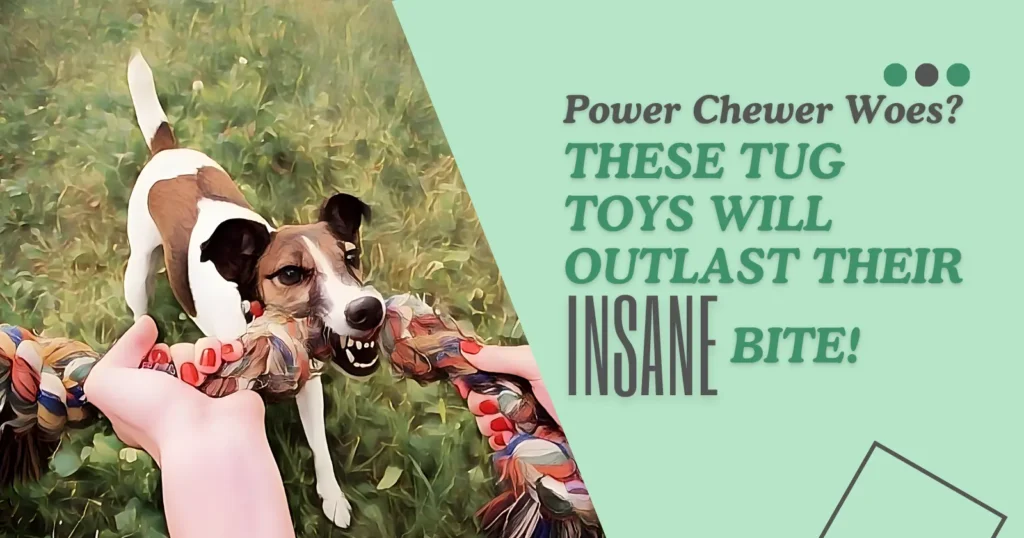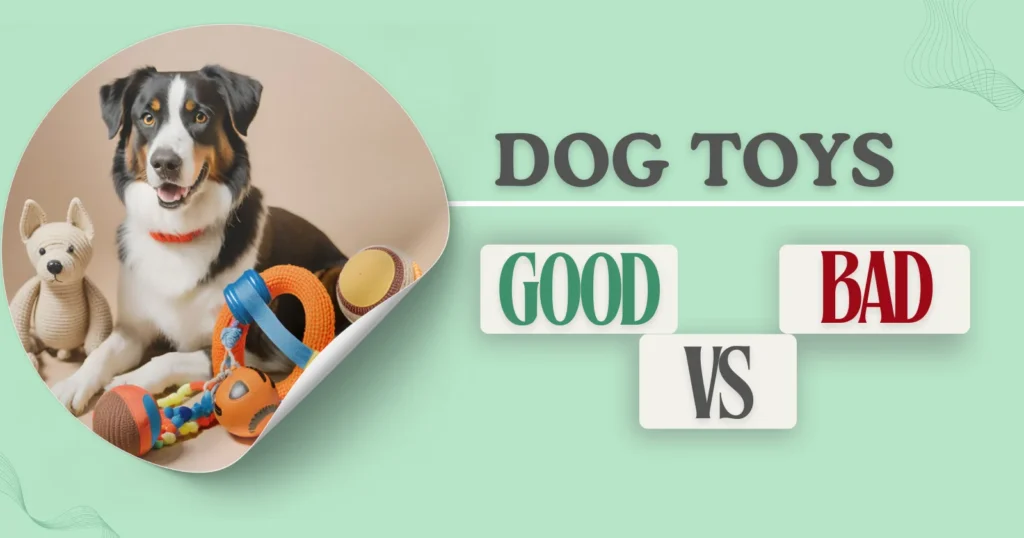As a pet owner it is extremely important to choose the right play pals for your furry friends because the wrong material can be life threateningly dangerous.
In 2009, the nonprofit environmental group Ecology Center conducted tests on around 400 pet products, many originating from China. The tests revealed that 45 percent of these products contained at least one harmful toxin, including lead, mercury, and arsenic. Exposure to these substances can lead to severe health issues in dogs, such as vomiting, diarrhea, convulsions, and brain damage,and even cancer according to Big Barker.com.
Some of these materials include PVCs, BPA, phthalates, chromium, cadmium, toy stuffings in plush toys, plastics, fibers in rope toys, and synthetic rubber. Others include mercury, arsenic, lead, and chlorine.
List of 10 unsafe and toxic materials found in dog toys


Choosing the right dog toys involves more than just finding something your pet enjoys; it also requires ensuring the toys are safe and non-toxic. Some toys can pose significant health risks to your dog due to their materials, design, and durability. Here’s a list of types of dog toys that can be potentially dangerous and potentially toxic:
1- Cheap Plastics and Vinyl:


These may contain harmful chemicals like phthalates and BPA, which can leach out as the dog chews on the toy. Such substances can disrupt endocrine functions and cause other health issues such as cancer as well as poisoning.
A few years ago, I noticed my golden retriever was particularly fond of a bright red chew toy. It was soft and bendy, exactly the kind Max loved to gnaw on during our afternoon downtime. Over time, however, I noticed that bits of the toy were tearing off, and Max seemed to be swallowing pieces of it. Concerned, I decided to do some digging into what the toy was made of.
It turns out the toy was made from PVC, a hard plastic softened with phthalates to make it more pliable and appealing to dogs like Max. But here’s the kicker: as these toys wear down, they can release harmful substances like chlorine and phthalates. Research has shown that chlorine exposure might weaken a dog’s immune system and even lead to cancer, while phthalates could disrupt a dog’s hormonal and reproductive systems. Moreover, the abrasion could affect Max’s gums and skin.
Vinyl or PVC toys are often soft and cheap, but they can contain harmful chemicals that may pose a risk if ingested. They are also prone to being torn into small, swallowable pieces.
2- Chemical Dyes:
Cadmium, a toxic chemical often found in the dyes used for some plastic dog chew toys, presents a serious risk to our canine companions. It’s crucial for dogs to maintain a healthy balance of calcium for their joints and kidneys to function properly. However, when dogs are exposed to high levels of cadmium, it can disrupt this balance, leading to calcium deficiency, which adversely affects their joints and kidneys.
Moreover, the dangers of cadmium go beyond just calcium disruption. Studies have indicated that ingestion of cadmium can lead to severe health issues in dogs, including lung tumors and leukemia. Considering these risks, it’s clear that using plastic dog toys containing cadmium or any potentially harmful substances is a gamble not worth taking. Opting for safer, non-toxic toy alternatives is a straightforward way to protect your dog’s health and ensure their playtime is both fun and safe.
3- Toys with Lead Paint:
Some painted toys, particularly those not manufactured under strict safety guidelines, may contain lead in their paint. Lead is highly toxic when ingested and can lead to serious health issues, including neurological damage.


Lead exposure in dogs can lead to a variety of severe health issues, depending on the level and duration of exposure. Some of the most troubling problems include vomiting, weight loss, anemia, seizures, and even permanent neurological damage. Symptoms of lead poisoning in dogs are diverse and may present as behavioral changes such as lethargy, aggression, constant snapping, seizures, hysteria, or hiding in dark areas. Dogs may also exhibit signs like depression, frothing at the mouth, lack of appetite (anorexia), weight loss, vomiting, and diarrhea. Given the serious health risks associated with lead toxicity, it’s crucial for pet owners to monitor and ensure the safety of their dog’s environment and toys.
4- Stuffed Toys with Dangerous Fillings:
Some plush toys are filled with materials like polystyrene beads, nutshells, or other small, hard particles that can cause internal injuries if swallowed. Common stuffing materials include synthetic fiber, batting, cotton, straw, wood wool, plastic pellets, and beans. While some of these materials may be safe, a majority of them can lead to gastrointestinal obstruction in our furry friends and result in blockages, poisoning, or even allergic reactions. Other symptoms may include vomiting to remove the ingested foreign body.
5- Toys with adhesives and glues:


A concerning issue about formaldehyde, a chemical banned in many countries due to its harmful effects. Despite this, it still finds its way into some dog toys, primarily through the adhesives used to bond parts of the toy together. Exposure to formaldehyde can cause skin irritation and respiratory problems in dogs, posing unnecessary risks to their health.
6- Rope fibers:


While rope toys are great for tug-of-war, those with loose or unraveling threads can be ingested, leading to digestive tract obstructions. Further, the fibers can be chemically dyed with toxic paints. These toys are designed for supervised play time; otherwise, they can be easily frayed and enter your dog’s digestive system, leading to the formation of a linear body. To remove this ingested string, your dog may even need surgery; other symptoms will include vomiting and diarrhea, and your pooch will require immediate medical attention.
7-Rawhide Chews Treated with Chemicals:
While popular, some rawhide chews are processed with harmful chemicals to improve their appearance and preservation. These chemicals can be harmful if ingested.
Rawhide chews, a popular choice for dogs due to their durability and ability to satisfy the natural chewing instinct, undergo a complex processing journey before reaching pet store shelves. Initially, rawhide is washed and sterilized using a mixture of chemicals, some of which can be harmful, including sodium sulfide, lime, chromium salts, bleach, and hydrogen peroxide. After cleaning, the rawhide is molded and dyed to enhance its appearance.
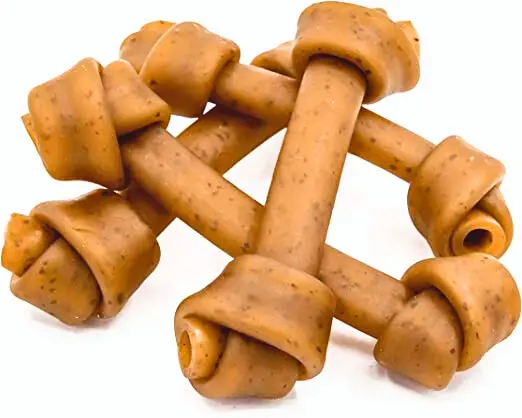

I personally wouldn’t recommend them. Despite their popularity, it’s important to consider the potential health risks associated with these chemicals, which can sometimes remain in trace amounts in the chews. Additionally, while rawhide is praised for its toughness and ability to last long, this same durability can pose a choking hazard or lead to digestive blockages if large pieces are swallowed. As such, pet owners should supervise their dogs while chewing rawhides and consider safer, more digestible alternatives to ensure their pets’ safety and well-being.
8- Tennis Balls Not Made for Dogs:
Regular tennis balls are designed for the sport, not for dogs. The abrasive material can wear down teeth, and if the ball breaks apart, the pieces can obstruct the airway or digestive tract. They are made with synthetic rubbers and fibers, which are extremely dangerous for your furry friends.
You can read about the different threats each type of dog poses here: Which type of dog toys are safe for your dog?
9- Glow Sticks and Glow Jewelry:
While not traditional dog toys, pets are sometimes attracted to them during play. These items contain a chemical that can be toxic when ingested.
Glow jewelry and glow sticks, while popular among party-goers, can pose serious risks to dogs. These items contain dibutyl phthalate (DBP), a clear to yellow, oily liquid that is known for its very bitter taste. Although DBP is not highly toxic, it can cause dramatic symptoms in dogs. Even a single bite into a glow stick or piece of glow jewelry can cause the DBP to leak, leading to profuse drooling, gagging, and retching due to its unpleasant taste and chemical properties.
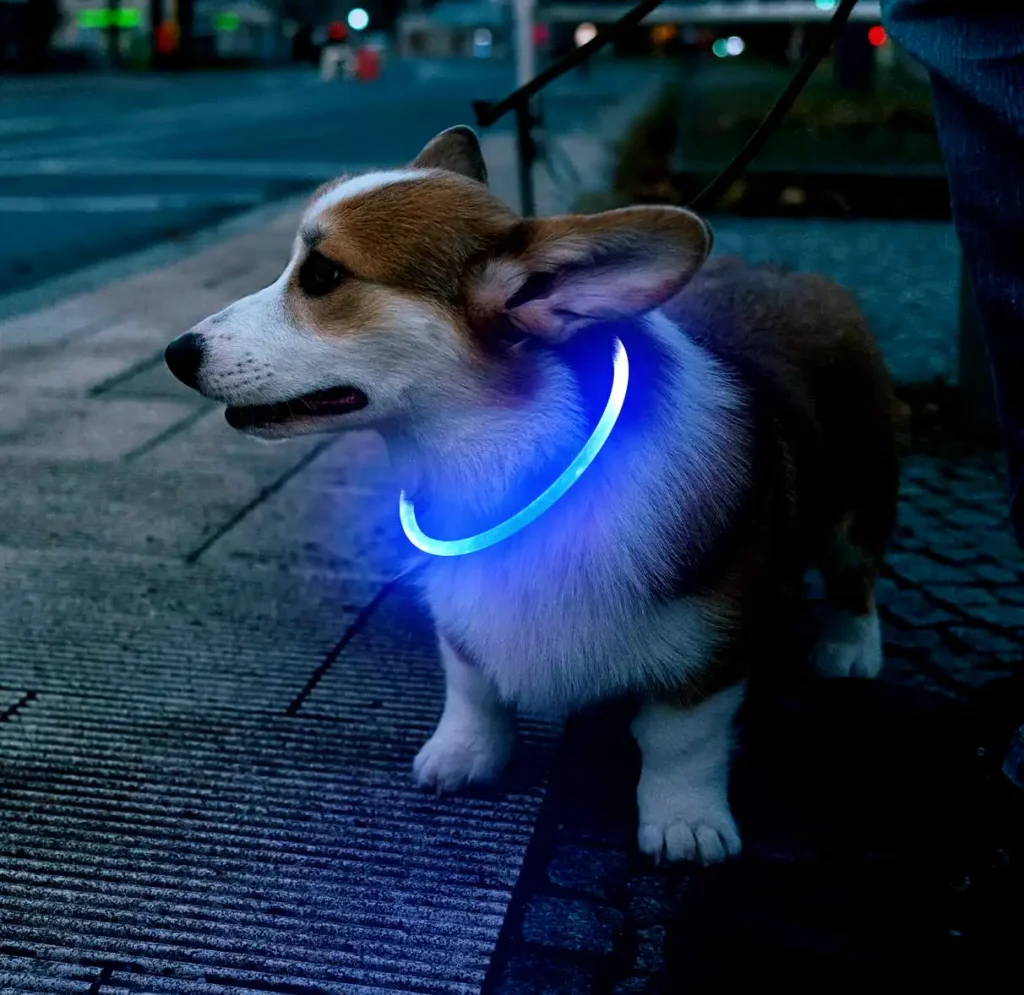

Beyond these immediate reactions, DBP can also cause mild irritation to a dog’s mouth and digestive system. Furthermore, the physical form of glow sticks and jewelry presents additional risks, such as choking and obstruction hazards. If a piece becomes lodged in a dog’s throat or gastrointestinal tract, it can be life-threatening, requiring urgent veterinary care. Therefore, it is crucial to keep such items out of reach of pets and ensure they play with safe, dog-appropriate toys that pose no chemical or physical risks.
10- Toys Treated with Fire Retardants or Stain Guards:
Some toys may be treated with chemicals to make them more durable, but these substances can be toxic if ingested.
Since the 1970s, regulations have required furniture to be treated with flame-retardant chemicals to reduce fire-related fatalities. Toys were one of the listed materials that could add fuel to the fire.
While effective in preventing fires, these chemicals, including polybrominated diphenyl ethers (PBDEs) and chlorinated tris (TDCPP), pose significant health risks to dogs. These substances are particularly harsh and can severely impact a dog’s health by disrupting their reproductive and endocrine systems and increasing the risk of cancer. Dogs metabolize these chemicals more rapidly than other household pets and humans, leading to higher concentrations in their bodies and significantly elevating their risk of health problems. This makes the presence of flame retardants in household environments a real and substantial threat to canine well-being.
Conclusion
Choosing the right toys for your furry friend is much more than a matter of entertainment; it’s a critical component of their health and safety. As pet owners, it’s our duty to ensure the toys we provide are not only fun but also free from hazardous materials that could harm our beloved companions. The alarming presence of toxic substances like phthalates, lead, and formaldehyde in many dog toys underscores the importance of being vigilant and informed. Opting for toys made from safe, non-toxic materials and avoiding those treated with harmful chemicals can significantly reduce the risk of health issues, ensuring that our dogs enjoy a healthy, joyful, and active life.
Our pets rely on us for their well-being, and part of loving them is protecting them from avoidable dangers. As we select toys, let’s prioritize their health and choose products that nurture their playful spirits while safeguarding their lives. Let’s commit to providing the best for our pets, who bring so much joy and companionship into our lives. Choosing wisely today can lead to a happier, healthier tomorrow for our beloved dogs.

